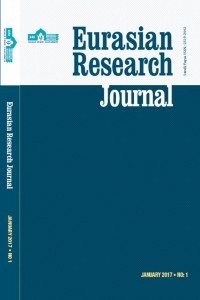A REGIONAL TRADE AGREEMENT FOR CENTRAL ASIA?
A REGIONAL TRADE AGREEMENT FOR CENTRAL ASIA?
Regionalism in Central Asia has attracted much attention but little action. This paper argues that, as the countries accept WTO trade law as the baseline, the time is ripe for agreeing on trade rules that go beyond the WTO, with focus on areas especially relevant to Central Asia. A modern trade agreement should not follow 20th century patterns of aiming for a customs union or free trade area; with low tariffs such preferential tariff arrangements are of little value. More important is to agree on areas where WTO rules are inadequate or non-existent, such as sanitary and phytosanitary measures and digitalization. For the framework for such an agreement, Central Asian countries can benefit from existing best practice, agreements with a chapter structure that permits focus on the most relevant areas while leaving more contentious areas for future negotiations.
Keywords:
Central Asia, Trade agreements, Digitalization SPS,
___
- Asian Development Bank (2021). Developing the services sector for economic diversification in CAREC countries. Asian Development Bank, Manila.
- Amiti, Mary and John Romalis (2006). Will the Doha Round lead to preference erosion? IMF Working Paper 06/10. International Monetary Fund, Washington DC.
- Asian Trade Centre (2020). Comparing digital rules in trade agreements. Asia Business Trade Association, Singapore.
- Baiker, Laura, Elena Bertola and Markus Jelitto (2021). Services domestic regulation – locking in good regulatory practices. Staff Working Paper ERSD-2021-14. Economic Research and Statistics Division, World Trade Organization, Geneva.
- CAREC (2021). E-commerce in CAREC countries: Laws and policies. Asian Development Bank, Manila.
- Dragneva, Rilka and Christopher A. Hartwell (2021). “The Eurasian Economic Union: Integration without liberalisation?” Post-Communist Economies, 33(2-3): 1-22.
- Fernandes, Ana Margarida, Kevin Lefebvre and Nadia Rocha (2021). Heterogeneous Impacts of Sanitary and Phyto-sanitary and Technical Barriers to Trade Regulations: Firm-level evidence from deep trade agreements, in Ana Margarida Fernandes, Nadia Rocha, and Michele Ruta, eds. The Economics of Deep Trade Agreements (Centre for Economic Policy Research, London), pp.79-87.
- Francois, Joseph, Bernard Hoekman and Miriam Manchin (2005). Preference erosion and multilateral trade liberalization. World Bank Policy Research Working Paper WPS3730, World Bank, Washington DC.
- Freund, Caroline and Diana Weinhold (2004). “On the effect of the internet on international trade”. Journal of International Economics, 62(1): 171-189.
- Gari, Gabriel (2020). Recent preferential trade agreements’ disciplines for tackling regulatory divergence in services: How far beyond GATS? World Trade Review 19, 1–29.
- Gregory, John (2020). E-Commerce in the CAREC Region: Laws and Policies, CAREC Trade Webinar.
- Hayakawa, Kazunobu, Daisuke Hitarsuka, Kohei Shiino and Seiya Sukegawa (2009). Who uses free trade agreements? ERIA Discussion Paper 2009-22, Economic Research Institute for ASEAN and East Asia, Jakarta.
- Hayakawa, Kazunobu, Fukunari Kimura and Nuttawut Laksanapanyakul (2018). “Measuring the usage of preferential tariffs in the world”. Review of World Economics, 154(4): 705-723.
- Hofmann, Claudia, Alberto Osnago and Michele Ruta (2017). Horizontal Depth: A new database on the content of preferential trade agreements, Policy Research Working Paper WPS7981, World Bank, Washington DC.
- Holzhacker, Hans (2020). Intra-CAREC Trade: Business as usual or about to change? CAREC Institute Economic Brief, 29 June, 2020.
- Johnson, Robert and Guillermo Noguera (2017). “A portrait of trade in value added over four decades”. Review of Economics and Statistics, 99(5): 896–911.
- Khitakhunov, Azimzhan, Bulat Mukhamediyev and Richard Pomfret (2017). “Eurasian Economic Union: Present and future perspectives”. Economic Change and Restructuring, 50(1): 59–77.
- Kohpaiboon, Archanun and Juthathip Jongwanich (2015). Use of FTAs from Thai Experience, ERIA Discussion Paper 2015-02, Economic Research Institute for ASEAN and East Asia, Jakarta.
- Lazaro, Dorothea, Loreli de Dios, Ghulam Samad and Aiken Rose Tafgar (2021). Expanding agri-trade in Central Asia through the use of electronic certificates. ADB Brief No. 184, Asian Development Bank, Manila.
- Lovelock, Peter (2020). The new generation of ‘Digital’ trade agreements: Fit for purpose? in Eduardo Pedrosa and Christopher Findlay eds. State of the Region 2020, Pacific Economic Cooperation Council, Singapore, pp. 31-52.
- Petri, Peter and Michael Plummer (2016). The economic effects of the TPP: New estimates, in Assessing the Trans-Pacific Partnership volume 1: Market Access and Sectoral Issues. Peterson Institute for International Economics: Washington DC, pp. 6-30.
- Petri, Peter and Michael Plummer (2020). “Should China join the New Trans-Pacific Partnership?” China and World Economy, 28(2): 18-36.
- Pomfret, Richard (2001). The Economics of Regional Trading Arrangements. Oxford University Press, Oxford, UK.
- Pomfret, Richard (2006). The Central Asian Economies since Independence. Princeton University Press, Princeton NJ.
- Pomfret, Richard (2019). The Central Asian Economies in the Twenty-first Century: Paving a New Silk Road. Princeton University Press, Princeton NJ.
- Pomfret, Richard (2020). “Uzbekistan and the World Trade Organization”. Silk Road: A Journal of Eurasian Development, 2(1): 54–61.
- Pomfret, Richard (2021a). The Economic Integration of Europe. Harvard University Press, Cambridge MA.
- Pomfret, Richard (2021b). “‘Regionalism’ and the Global Trade System”. The World Economy, 44(9): 2496-2514.
- Pomfret, Richard, Uwe Kaufmann and Christopher Findlay (2010). ‘Are preferential tariffs utilized? Evidence from Australian imports, 2000-9’, RIETI Discussion Papers Series 10-E-042, Research Institute of Economy, Trade and Industry, Tokyo.
- Troitsky, Evgeny (2020). The Eurasian Economic Union at Five: Great expectations and hard times, The Russian File, Kennan Institute, Woodrow Wilson International Center for Scholars, Washington DC.
- Vinokurov, Evgeny (2018). Introduction to the Eurasian Economic Union. Palgrave Macmillan.
- ISSN: 2519-2442
- Yayın Aralığı: Yılda 4 Sayı
- Başlangıç: 2019
- Yayıncı: Hoca Ahmet Yesevi Uluslararası Türk-Kazak Üniversitesi
